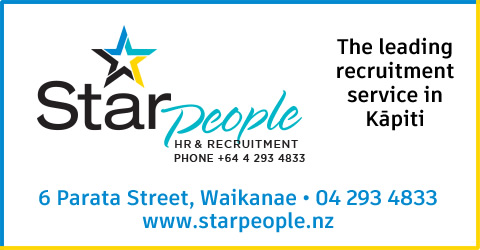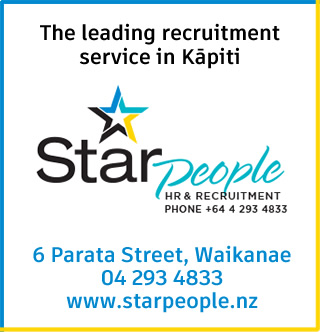
Recent figures released as part of workforce planning for the Kāpiti District shows the mean annual earnings in Kāpiti are just over $50,000 – around $20,000 lower than the wider Wellington region, and $30,000 lower than Wellington city; and the Kāpiti Coast Chamber of Commerce says the gap between these figures must narrow if the district is to attract more people to work and live in the region.
The Kāpiti Coast District Council is currently consulting with stakeholders on a plan to develop, attract and retain a skilled and competitive workforce for the district. Along with income data, the Infometrics research also showed the Kāpiti district’s population had grown by 1.8% in 2020 to around 57,000 people, although the population was aging. Figures also show the Kāpiti Coast’s key industries include construction, health care and retail trade, which employ 16%, 14% and 12% of all employees in the district respectively.
Kāpiti Coast Chamber of Commerce Co-Chair Jacinda Thorn, says higher wages in Wellington make it easy for the thousands of people who choose to commute each day.
“For us to be competitive with employment, as well as a fantastic place to live, our economy needs to be producing jobs that pay well and are more closely matched to our neighbouring communities. Every day, skilled people are heading into the city to work, if they could work closer to home that would benefit our wider community – they would be spending money locally and creating a stronger economy,”
“The Police Call centre has provided excellent employment opportunities in Paraparaumu – it would be fantastic to have Government departments, and more large organisations and businesses come to Kāpiti who can employ people locally,” says Ms Thorn.
The Chamber is asking its members – who represent the local business community – to give feedback on the council’s Workforce Plan, which aims to support the local economy by understanding a variety of issues.
These include current and future workforce needs, skills to fill gaps and shortages, types of training and educational pathways or services needed, specific opportunities for youth, Māori, older people and people with disabilities, as well as changing business models and the impacts of COVID-19.
“The Workforce plan also needs to address how we make our individual town centres thrive, what tertiary educational opportunities are available in Kāpiti and how easy it is for people to commute to work locally, if they don’t have their own transport.
“We need to raise our game in productivity, opportunities and earning potential. We look forward to seeing the plan and pathway forward to achieving that”, says Ms Thorn.
Other figures in the research showed Kāpiti has a 2021 unemployment rate of 3.9%, compared with 4.7% nationally, and a self-employment rate of 29.7% compared with a national figure of 16.8%.











































